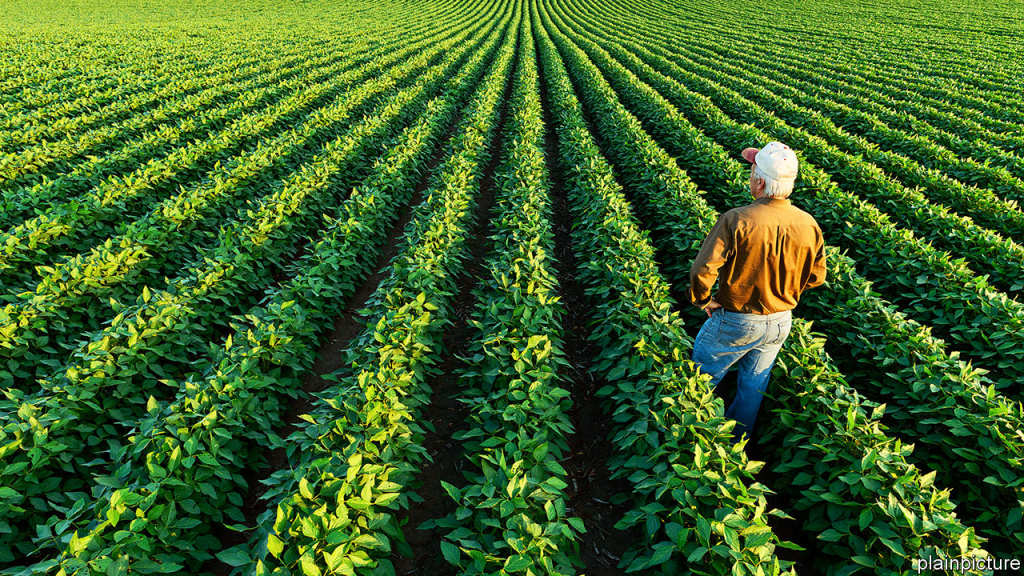
Minimum Support Price or MSP is the minimum price government fixes for items like rice, wheat etc. One should note that whenever a government organization purchases items from the farmers it has to be more than this price. It can also be said that it is a way of government to keep price of a product, for example rice, wheat etc, higher than current market price. After fixing a support price the Government of India appoints some agency like NABARD to purchase crop from farmers directly.
Fixing of MSP is done with the sole objective of enabling the farmer in getting a better price for his produce. In this way, the Government maintains specified price levels at a minimum above market equilibrium by subsidy or by purchase of the market surplus at the guaranteed price levels. For sugarcane production, CACP recommends Statutory Minimum Price (SMP) it is minimum statutory price of sugarcane the state government can offer more than SMP.
The ministry of agriculture announces the MSP of various crops time to time as purchasing those crops on that MSP prompts the farmers in producing more and also protects them from the risk of sharp fall in prices during the harvest season. Researchers have found out that MSP has positively affects on agricultural production where the policy is adopted but the result is not always true. MSP has positively affected on production and area of rice, wheat, oilseeds, cotton and sugarcane but the impact has not been significantly positive affecting on production and area under pulses and Jute and Mesta.
Policies related to import and export also influence price fluctuations of agricultural commodities. Increase in import duty discourages import activity, thereby resulting in limiting of supply in the country. Normally this pushes prices on the upward side. Decrease in import duty has a reverse impact because it encourages imports thereby creating excess supply situation. Lowering of export duty on the other hand boosts export prospects hence helps domestic prices to move up. A hike in the duty results in lowering of domestic prices because it discourages export sales.
Government imposes restrictions on the quantity of commodities like Chana, guarseed, sugar a trader can hold in order to discourage hoarding activities. Hoarding leads to rising price levels therefore this step helps in curbing price rise of agro commodities. Imposition of restrictions in stocking limits prompts more of stocked/hoarded goods or commodities to enter the market/mandi, which leads to increase in supplies and therefore caps upside movement of prices. Likewise, easing restrictions on the stocking limits encourages traders/stockists to bring lesser quantum of their produce for sale. This is done with the objective to prevent further fall in price levels.
Credit Control is an important tool used by Reserve Bank of India. This is a significant measure of the monetary policy used for controlling the demand and supply of money (liquidity) in the economy. The Central Bank administers control over the credit that the commercial banks grant. Credit control helps in enabling banks to control inflationary trends in the economy and enhancing economic growth, eventually resulting in increase in real national income with stability.
Two methods through which the RBI controls the money supply in the economy are:
-
Qualitative Method
-
Quantitative Method
Qualitative Method
Quality here refers to the uses to which bank credit is directed. Qualitative Method controls the manner of channelizing of cash and credit in the economy and is a ‘selective method’ because it restricts credit for certain section where as expands for the other known as the ‘priority sector’ depending on the situation. Example – The banks may feel that the big capitalists are getting a disproportionately large share in the total credit, causing various disturbances and inequality in the economy, while the small-scale industries, consumer goods industries and agriculture not receiving adequate amount of credit.
Quantitative Method
Quantitative Credit Control implies the control of the total amount or quantity of credit. Let’s say the Central Bank considers that Rs. One Lakh is the maximum safe limit (on the basis of its calculations) for the expansion of credit. Suppose the actual credit at that given point of time is Rs. 1.10 Lakh. Under this scenario it becomes necessary for the Central Bank to bring it down to Rs One Lakh by announcing tightening policy measures. Likewise the apex bank will regulate its policies in favor of pumping credit into the economy in case the actual credit falls to Rs.90000 or 95000. (Below Rs. One Lakh)
















